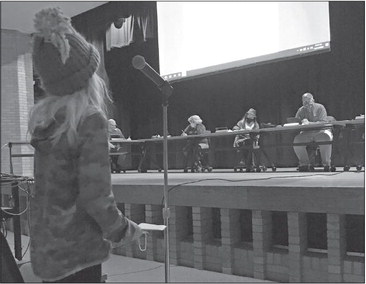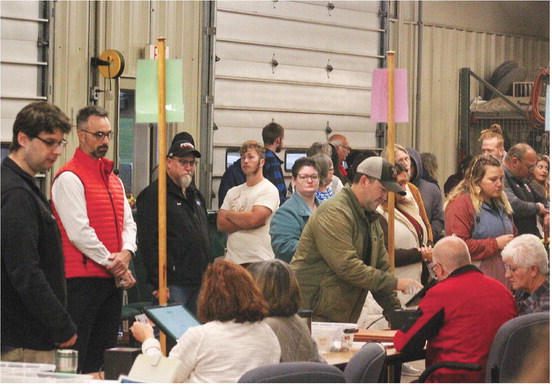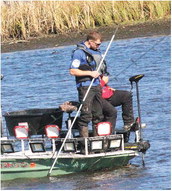Colby K-12 switching to five days


By Kevin O’Brien
Several Colby parents, along with a couple of students, urged school board members Monday to allow as much inperson instruction as possible while also loosening the district’s mask rules.
The board met them halfway voting to move toward a five-day-a-week in-person schedule for second semester and forgoing any plans for another two weeks of virtual-only instruction after the Christmas break.
No action was taken on the district’s mask-wearing rules, which were not even on the agenda but still drew a lot of comments from members of the public who spoke at the start of the meeting.
In many ways, Monday’s meeting was a continuation of the board’s November meeting, when parents and others vented for over an hour about the district’s efforts to slow the spread of COVID-19.
Some of the same parents came before the board again on Monday, continuing to express frustration about what they see as overly restrictive rules.
Parent Jessica Ertl said she was “pretty disappointed” by the board’s decision last month to continue requiring a doctor’s note for students who want an exemption to the mask mandate, and for going all-virtual in grades 4-12 for two weeks after the Thanksgiving break.
“I think it was made beforehand,” referring to the board’s decision to continue requiring masks unless a doctor’s note is provided.
Board president Bill Tesmer reminded Ertl that the board was not discussing the mask mandate again Monday, but she suggested that many students are opting for online classes because they don’t want to wear masks at school.
“These kids are getting kicked out of school — pretty much, that’s what it’s amounting to — because of masks,” she said. “It’s all tied together.”
Ertl questioned the current four days a week of in-person classes, with one day off for cleaning. She said this is leading to students and teachers falling behind in their classwork. She also wondered
See COLBY K-12/ Page 8 Colby
about the logic of allowing students in kindergarten through third to return to school after Thanksgiving while all of the students were forced to stay home.
“Did those kids not go to the same holiday (gatherings)?” she said. “Some of these things just don’t make sense.”
Parent Amanda Haupt, who also spoke at last month’s meeting, provided a different perspective, saying she was “very appreciative” of the board allowing a thorough discussion. Although she would have preferred that all students in kindergarten through 12th attended online classes after Thanksgiving, she said communication between teachers and students in the third-grade has “greatly improved” in the last month.
Haupt argued against switching to a five-day in-person week, saying that she knows of at least eight first- and thirdgraders who have family members with COVID-19 and they appreciate the fifth day being used for cleaning the schools.
Though classes may be falling behind where they would normally be, Haupt said she appreciates the ability to keep her kids at home temporarily after a break, as she did after Thanksgiving.
“What we are teaching are kids is resiliency — the fact that things change and we kind of have to roll with it,” she said.
Sixth-grader Sage Lueth, 11, said she and her brother are doing online instruction at home, even though they’d prefer to be in school with their friends. She said the mask mandate and the backand- forth scheduling are the reasons she and her sibling are learning from home.
“Right away in the school year, kids were already tired of wearing the masks, and teachers kept yelling at them to put them on, so it seemed liked the masks were more important than the education — the main reason we’re here,” she said.
Josey Lueth, Sage’s mother, said she does not believe the district is living up to its motto of “learning for all” under the current circumstances.
“Right now, I don’t feel like my children are learning as best as they can,” she said.
Lueth said her kids are still subject to the “in-and-out” quarantining even though they’ve already had COVID-19 and should be immune for at least 90 days according to the health department. She also voiced objections about fourth-graders having to go into the middle school and eat lunch in the hallways.
“It was too much for my nine-yearold,” she said. “I said ‘At least we’ll have some consistency at home.’” Kim Meier said her kids have struggled with trying to learn from home, and she wondered why the district requires a doctor’s note for mask exemptions when the neighboring Abbotsford School District does not. She implored board members to encourage in-person classes as much as possible.
“The bottom line is: keep our kids in school,” she said. “They need to be in school. Period.”
Charlotte Haines said her children are home-schooled but she thinks the efforts to slow the spread of COVID-19 have done more harm than good based on increased rates of depression, anxiety and suicide. She said teachers should be focusing on educating students rather than enforcing mask rules.
“Let’s use some commonsense here,” she said.
Middle-school student Maxwell Meier agreed with the parents who said that the mask rules are driving more students into the at-home option, even though he believes the number of COVID-19 cases is being exaggerated.
“When I wear a mask, I cannot wear it for more than 10 minutes because I feel like I’m suffocating,” he said, noting that it affects his ability to think and learn.
Board discussion, decisions
Superintendent Steve Kolden told the board that the number of students and staff out on COVID quarantine has dropped significantly since the two-week virtual-only break — from 322 students and 28 staff before Thanksgiving to 42 students and one staff as of Monday.
However, he questioned whether a single set of data points was enough to establish a cause-and-effect relationship between the virtual-only period and the drop in cases.
“I don’t know that I have good data to show that it worked,” he said.
Kolden also told the board that 76 teachers responded to a recent survey about doing further virtual-only breaks, and about two-thirds were in favor of the idea. Still, he noted that the sentiment expressed by parents on Monday went the opposite way.
Board member Dave Decker noted that Abbotsford schools did not implement a two-week virtual-only period after their holiday break.
“It just didn’t seem like there was a large spike right after that Thanksgiving break,” he said.
No action was taken by the board to try another two-week virtual break.
The board did vote 6-0, with one absence, to switch to a five-day in-person school week as of Jan. 25, the first day of the second semester.
Some board members were initially reluctant to vote on the issue because of a possible increase in COVID cases after Christmas, but eventually decided to make a decision Monday so staff can prepare to make the transition from four to five days a week.
Board member Teri Hanson said the board should not wait until its next meeting on Jan. 18 to make the decision for second semester.
“I think we plan ahead so if we make that shift, it’s ready to go,” she said. “We don’t wait until mid-January to say whether we’re going to do that or not.”
Board member Eric Elmhorst, however, wondered what would happen if there was a big increase in cases and several staff members were out.
“How can we plan ahead when we don’t know what the virus is going to do?” he said.
Hanson said it’s worth asking what the district would do if it faced with further staff shortages.
Teacher Lisa Kirker, who is in charge of contacting substitutes, said the numbers willing to come in are way down this year due to COVID concerns.
“Let’s face it, most of our subs are older,” she said. “They don’t want to come into the building when there’s 300 kids and any of them could be carriers.”
In general, Kirker said teachers would love to get rid of the mask rules and not have to worry about doing virtual instruction, but that would ignore the health risks posed by COVID-19.
“We have a number of staff who have severe medical issues, and if they get COVID, you might lose them,” she said. “You talk about stress — walking into the building causes stress.”
“We want all our kids, we want to be teaching here, but we’re scared,” she added.
Kolden noted that staff were about evenly split on whether to switch to five days — with 43 percent in favor — but he stressed the importance of making the switch at the semester break so the transition is smoother.
Before a motion was made, board president Bill Tesmer said he wanted to see the board be “more proactive than reactive.”
“This all hit us back in March, and all we’ve been doing is playing catch-up,” he said. “We need to start planning ahead and being more proactive.”
In other COVID-related news, Kolden told the board that the district is sticking with a full 14-day quarantine period instead of moving to a 10 or seven-day quarantine, as suggested by some health authorities.
Kolden said the shortened quarantined times are only recommended for those who can maintain social distancing, which is not possible with the number of students and staff in the buildings at one time.


